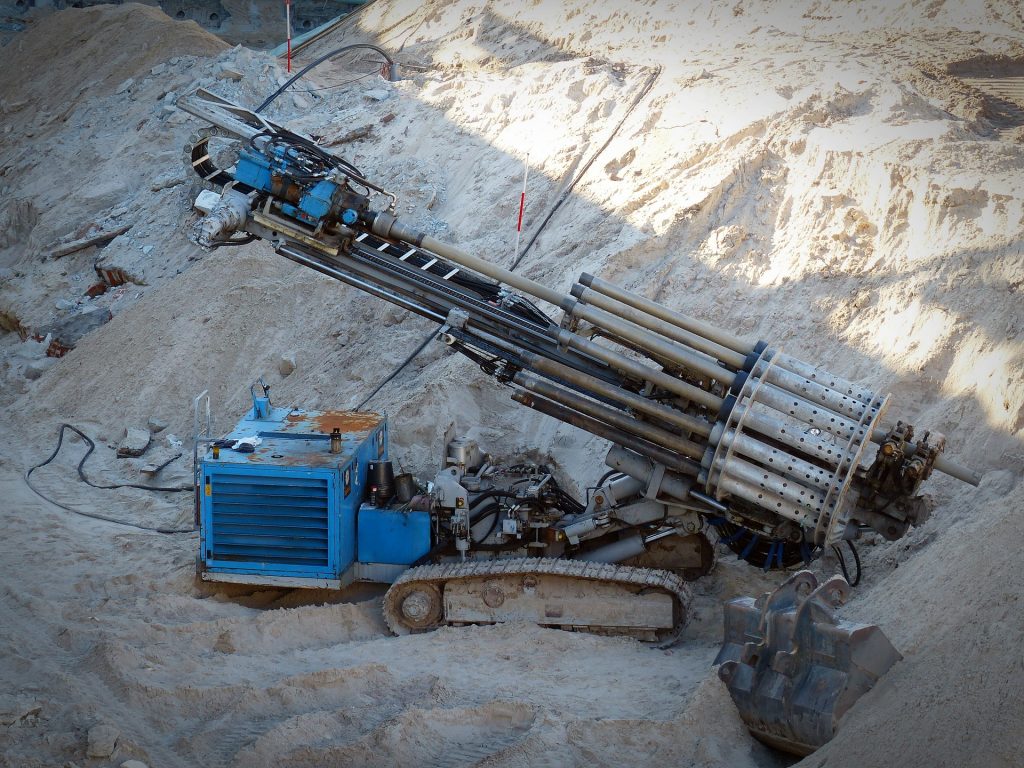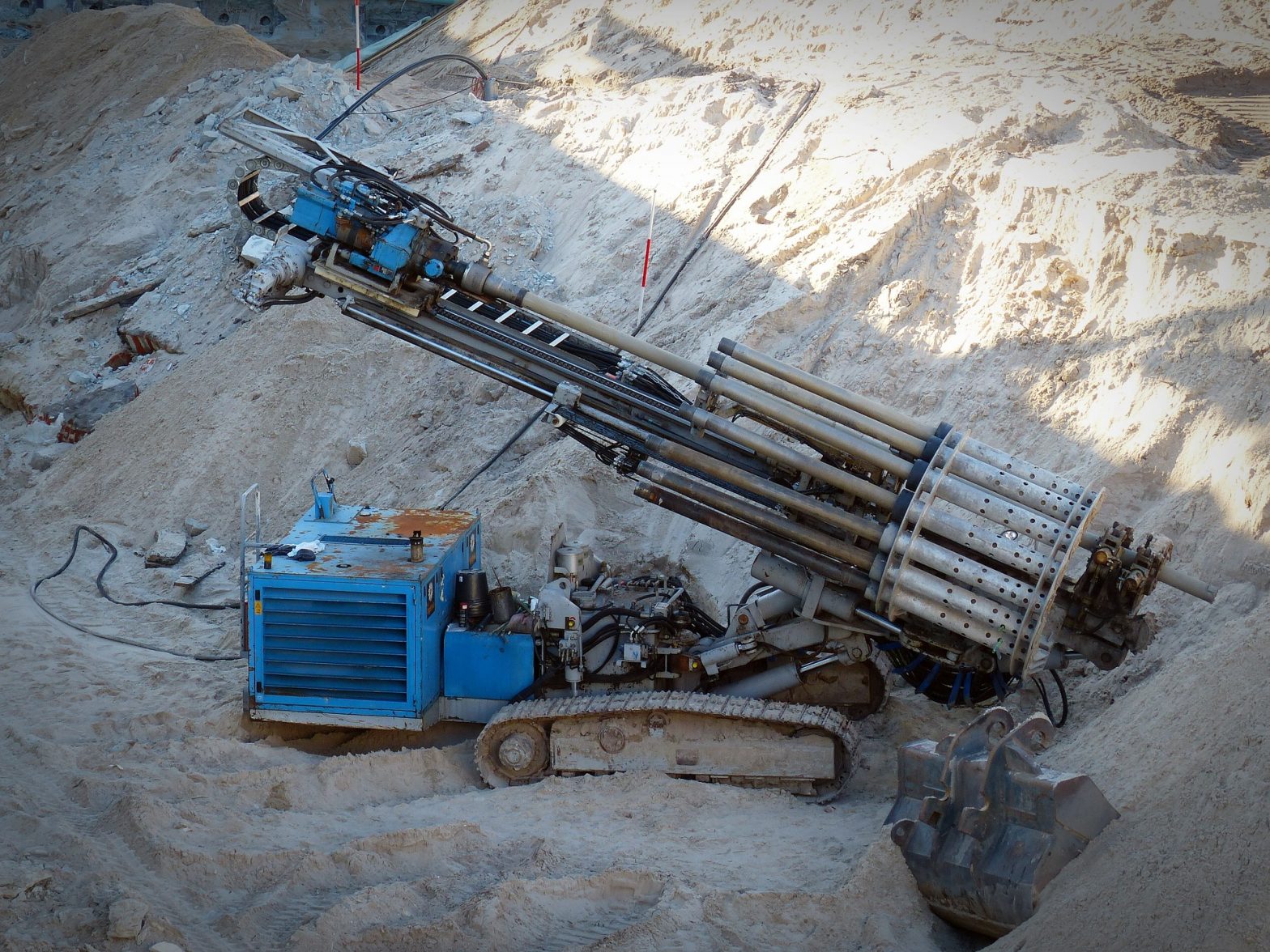 Soil and rock anchors, sometimes collectively referred to as ground anchors, are tension elements consisting of a tendon composed of prestressing strands or a reinforcing steel bar that is grouted in a borehole. Ground anchors derive resistance to load through the bond strength between the grout, the tendon and the soil or rock in which it is installed.
Soil and rock anchors, sometimes collectively referred to as ground anchors, are tension elements consisting of a tendon composed of prestressing strands or a reinforcing steel bar that is grouted in a borehole. Ground anchors derive resistance to load through the bond strength between the grout, the tendon and the soil or rock in which it is installed.
Ground anchors can be used in temporary or permanent applications, can be installed at angles ranging from vertical to almost horizontal, and are often prestressed to control the deflection of the structure that they support. They were first used in the United States for temporary excavation support applications over 50 years ago. Subsequently, the use of permanent ground anchors has become commonplace in transportation projects. They are often used in non-building structures but are perhaps underutilized in the building sector despite being an economical and adaptable means of resisting lateral load effects on foundations. A common application of ground anchors is to provide lateral support for excavation support systems as “tiebacks”. Tiebacks are generally the preferred method for supporting deep excavations because of their versatility and economy. In addition, when subsurface and site conditions permit their use, tiebacks present less of an obstruction to excavation and construction, unlike internal bracing, simplifying construction staging.
Vertical ground anchors used as “tiedowns” are commonly used in underground structures subjected to buoyancy. Incorporating tiedowns into the structure is more economical than the alternative of additional excavation and concrete placement below the groundwater level so that the concrete slab is thick enough to resist buoyancy through dead load alone. Tiedowns are often used to anchor water and wastewater treatment structures and pumping stations, which are commonly built in low-lying areas with high groundwater and will be occasionally emptied for cleaning and maintenance.
The use of tiedowns to resist the effects of lateral loads is common for certain types of structures, like open-framed towers used for electrical and communications infrastructure. These structures are relatively tall and light. The gravity loads on their foundations are modest. Comparatively, the foundation demands to resist lateral forces and overturning mostly due to wind can be high. Therefore, ground anchors can be used to transmit tension on the foundations or guy wires into the ground. Preloading ground anchors results in a constant downward pressure on a foundation, which increases the friction that can develop between the foundation and the ground. This increases the resistance of the foundation to horizontal shear forces.
The same logic for using ground anchors to resist lateral loads on towers and similar structures applies to buildings that are subjected to high lateral forces relative to their weight. High winds and earthquakes result in base shear and overturning effects. Depending on the height of the structure and its configuration, certain foundation elements may be subject to uplift. In taller buildings, especially steel-framed structures, perimeter columns may be in tension under design lateral loads. In buildings that resist lateral loads through a core or isolated shear walls, lateral loads cause the resultant gravity load on the foundation to shift off center. Since spread foundations cannot transmit significant tension forces, the portion of the foundation that would be in tension ceases to bear loads, increasing the bearing pressure exerted on the remainder of the foundation that is still in contact with the ground. This could result in significant foundation settlement or rotation. In moment-framed buildings, the distribution of lateral loads through the building frame could cause similar effects on a column-by-column basis. In buildings with deep basements, buoyancy from groundwater can limit the efficacy of spread foundations and produce significant bending forces in mat foundations.
Some structural engineers in the building industry are conditioned to believe that uplift on a foundation automatically warrants the use of deep foundation elements, such as piles and drilled shafts which can support gravity, lateral and uplift loads. This thinking leads to projects where drilled piles or shafts are advanced through stiff soils and even rock to develop uplift resistance through skin friction. In such cases, the stratum in which the deep foundations are installed is usually competent to support the gravity load of the structure on spread footings or a mat foundation.
Deep foundations are relatively expensive and introduce additional construction risk, especially in an urban environment. The hazards of vibrations from pile driving are well known. Drilling piles or shafts reduce vibrations relative to driven piles, but can still produce damaging vibrations if hard drilling is encountered or impact methods are used to advance the pile into rock. In addition, depending on the method used to maintain hole stability, the excavations for drilled piles and shafts are susceptible to cave-ins or “ground loss” caused by the removal of soil outside a cased hole. When soil collapses into a pile or shaft excavation or a void produced by ground loss, significant localized settlement may occur near the surface, potentially damaging adjacent structures.
In cases where competent soil or rock is present at the foundation level, but foundations are subject to uplift, ground anchors can provide a lower cost and lower risk alternative. Spread foundations can be used to resist the building’s gravity loads. Prestressed soil or rock anchors can be installed to clamp the foundation to the bearing surface. Uplift on the foundation will reduce the bearing pressure, but the foundation typically will remain in contact with the subgrade under service loads. The preload also increases the friction that can develop between the foundation and the ground to resist base shear. Ground anchors are a particularly economical solution for resisting the buoyancy of mat foundations between columns.
In addition to reduced costs, ground anchors are smaller in diameter than other deep foundation elements, which allows more location flexibility, potentially greater redundancy and less risk if problems are encountered during drilling. In buildings with a limited number of foundations subject to uplift, or high variability in uplift between otherwise similarly loaded foundation elements, better compatibility between foundation elements under gravity can be attained.
Unlike ground anchors used for temporary excavation support purposes, tiedowns used in buildings are permanent and need to have a design life comparable to that of the building. The embedment of the anchor tendon in cement grout provides corrosion protection similar to that of concrete reinforcing steel if proper drilling and grouting procedures are followed. In addition, the manufacturers of ground anchor tendons typically provide corrosion protection options for the tendons such as epoxy coating, galvanizing or encapsulation of the tendon in a plastic sheath filled with corrosion-resistant grease or grout. Permanent anchors consist of a protected tendon with sufficient grout cover, resulting in redundant corrosion protection measures. Some manufacturers claim a 100-year design life for their encapsulated tendons. Prestressing avoids stress reversals under cyclic loading that could lead to fatigue failures. Standard practice is to test every anchor to verify the bond strength and confirm proper construction.
A variety of proprietary and commodity systems can be used to construct soil and rock anchors. Consequently, it is often advantageous to delegate the design of the anchor to the contractor through a performance specification or accommodate contractor-proposed substitutions or alternatives to a baseline design. In either case, some knowledge of ground anchor design and construction is necessary to properly specify them. For example, the contractor should be provided with a design bond strength in the specification or ample subsurface information to determine it themselves. This requires the subsurface explorations to be advanced at least five feet beyond the depth of the anchor’s bond zone. Therefore, similarly to other deep foundation applications, the use of ground anchors and their likely depth must be contemplated in scoping the subsurface exploration. The type of soil or rock containing the bond zone and the approximate length of the anchor must therefore be understood early in the design phase of the project.
When deep foundations appear necessary to resist lateral loads alone, a more economical and lower-risk alternative may be soil and rock anchors combined with conventional spread foundations or a mat foundation. Soil and rock anchors have a long and successful history of use in a variety of temporary and permanent applications. Building project design teams should be aware of the applicability of ground anchors to resisting lateral load effects on building foundations and consider their use early in the design process when they are applicable.
The information and statements in this document are for information purposes only and do not comprise the professional advice of the author or create a professional relationship between reader and author.
